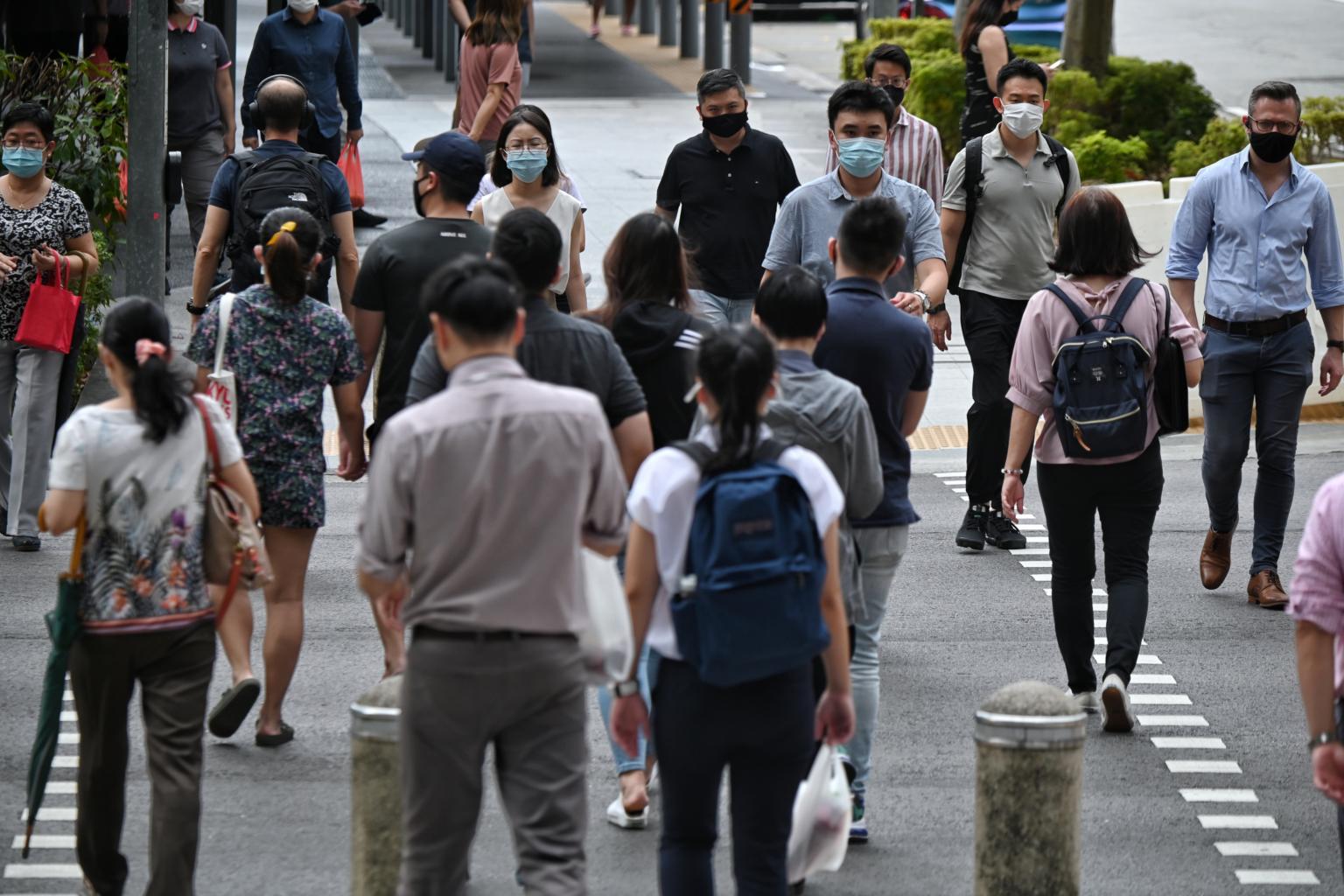Job vacancies in Singapore hit record high of 98,700 in September: MOM
Sign up now: Get ST's newsletters delivered to your inbox

There were 209 job openings for every 100 unemployed persons in September 2021.
ST PHOTO: KUA CHEE SIONG
Follow topic:
SINGAPORE - Border restrictions and manpower demand in growth sectors pushed job vacancies in Singapore to an all-time high of 98,700 in September, according to the Ministry of Manpower (MOM) on Wednesday (Dec 15).
This was a rise from the 92,100 job vacancies reported for June this year. The figure is seasonally adjusted.
There were 209 job openings for every 100 unemployed individuals in September, up from 163 in June. The ratio of job vacancies to unemployed people rose to above two for the first time in over two decades. This means that the number of job vacancies is more than double the number of unemployed people. These are seasonally adjusted figures.
This marked the fifth consecutive quarter that vacancies had risen, although the pace of increase had slowed.
The rising number of vacancies was due to border restrictions that restricted the inflow of foreign labour. Total employment declined by a significantly smaller extent in the third quarter of 2021, decreasing by 2,400 excluding migrant domestic workers, compared with the previous quarter which saw a drop of 16,300. This was because resident employment increased by 19,100 while non-resident employment fell by 21,500.
In particular, this was observed in sectors that had seen a substantial drop in work permit holders, namely manufacturing, construction, food and beverage, and administrative and support services. These sectors accounted for 38 per cent of all job vacancies.
"The number of job vacancies and the ratio of job vacancies to unemployed persons are expected to remain high until border restrictions are lifted," said the MOM in its third-quarter labour market report.
There was also sustained demand in growth sectors such as professional services, financial services, information and communications, and health and social services, where resident employment has also increased in tandem, the ministry added.
Occupations with more vacancies included software, Web and multimedia developers, systems analysts, commercial and marketing sales executives, accountants and nurses.
Singapore Human Resources Institute president Low Peck Kem said the increase in job vacancies “is always good news for job seekers”.
“Though 38 per cent (of vacancies) are from sectors which traditionally tap more on work permit holders, with the right level of skills upgrading, resetting of expectations and job redesign, I am sure we will be able to attract locals to consider these vacancies,” said Ms Low.
She added that the labour market will remain tight for the right talent in 2022. “We would still expect to see high levels of vacancies and we have to be cautious of structural unemployment."
AYP Group managing director Jolin Nguyen noted that many of the industries that require large sources of labour are those that could benefit from automation, such as manufacturing, food and beverage, and other support services.
“This shows the importance of business entities evolving to adopt a leaner and smaller workforce,” she added.
National Trades Union Congress (NTUC) assistant secretary-general Desmond Choo said that employers and industries could work with training partners such as Workforce Singapore, the Employment and Employability Institute, and NTUC Job Security Council to address the structural problem of higher job vacancies.
“A targeted and hand-in-hand approach at specific industries would have to be the way forward as we move into 2022,” he added.

